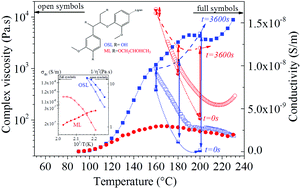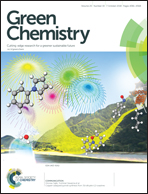Understanding the thermal and dielectric response of organosolv and modified kraft lignin as a carbon fibre precursor†
Abstract
Understanding the thermal behaviour of lignin is crucial in order to realise its valorisation as an engineering polymer. Two hardwood lignins, organosolv (OSL) and chemically modified kraft lignin (ML) have been chosen to represent important classes of renewable and abundant raw materials. The relationship between ionic mobility and viscosity in OSL and ML has been studied. The rheological results have been interpreted in terms of the competitive processes of thermal plasticisation and stiffening through crosslinking. Results show that with OSL, crosslinking proceeds relatively rapidly, and this is consistent with its more reactive structure. Higher molecular weight (Mw) influenced the melt stability as cross-linking kinetics was reduced and this was attributed to the reduction of chain ends available for cross-linking reactions. Scanning calorimetry has shown that both materials are glassy and pass through the glass transition between 100 °C and 115 °C, with the higher molecular weight modified material having a slightly higher Tg. Both lignins show pronounced maxima in the Gram–Schmidt plots for methane or methanol around 400 °C. However, a significant difference between the materials is observed with the detection of a strong carbonyl peak in the evolution products of the ML, which is attributed to the scission of the hydroxypropyl substituent present in the ML structure. The differences in the degradation processes are further reflected in the dielectric properties of the partially degraded materials where loss maxima occur at different temperatures and show different degrees of frequency dependence. An important observation is the difference in conductivity, where higher values for OSL are attributed to the cross-linking between adjacent benzene rings, whereas with the ML, a lower conductivity is associated with intrinsically less conductive intermolecular linkages. These results demonstrate that the thermal decomposition of the two lignins follows significantly different paths at the molecular level. With the more reactive OSL, it appears to be the case that there is a greater tendency to form direct ring to ring crosslinks and this is very significant for the properties of the intended end product.



 Please wait while we load your content...
Please wait while we load your content...